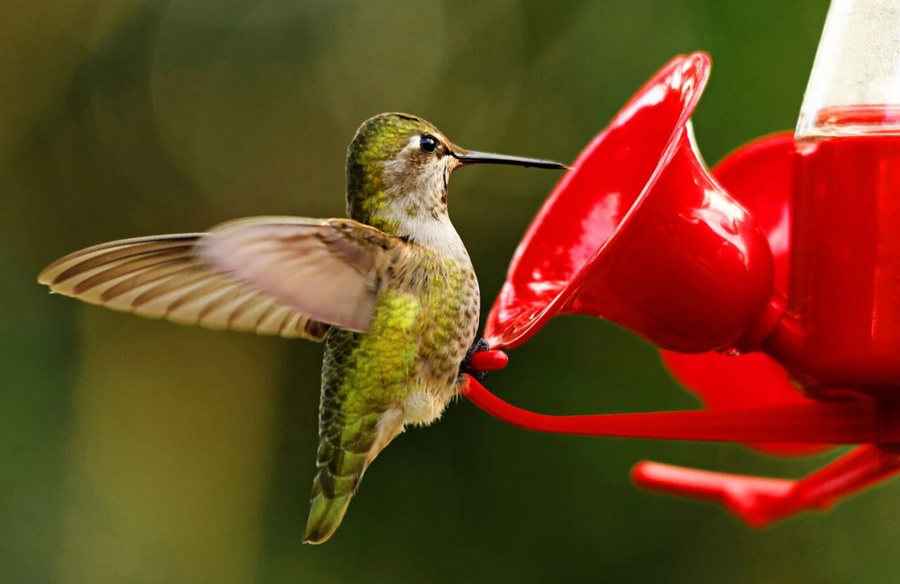Hummingbirds are among the most fascinating birds to observe, with their iridescent feathers, rapid wingbeats, and agile flight. One of the best ways to attract them to your yard is by using a hummingbird feeder. But what exactly should you put in that feeder to keep your tiny visitors happy and healthy?
This article will walk you through everything you need to know about feeding hummingbirds safely and effectively.
1. The Best Food for Hummingbirds: Homemade Nectar
The best and safest food for hummingbirds is a simple sugar-water solution that mimics the natural nectar found in flowers. You don’t need any special ingredients or store-bought mixes. Here’s the perfect recipe:
Hummingbird Nectar Recipe (4:1 Ratio)
Ingredients:
- 1 part white granulated sugar
- 4 parts clean water (tap or filtered)
Instructions:
1. Boil the water for 1–2 minutes (optional but helps dissolve sugar and kill any bacteria).
2. Stir in the sugar until fully dissolved.
3. Let the nectar cool completely.
4. Fill your feeder and store any leftover nectar in the refrigerator for up to one week.
Example: To make 1 cup of nectar, mix 1/4 cup sugar with 1 cup water.
2. What Not to Put in Hummingbird Feeders
Feeding hummingbirds seems simple, but there are some common mistakes that can harm them. Avoid the following ingredients at all costs:
Red Dye or Food Coloring
Although commercial nectars often include red dye to attract birds, this can be harmful to their kidneys and overall health. Most feeders are already red, which is enough to attract hummingbirds naturally.
Honey
Honey ferments quickly and can grow dangerous mold and bacteria. It can also cause a deadly fungal infection in hummingbirds.
Brown or Raw Sugar
These sugars contain iron and other impurities that are toxic to hummingbirds. Only use plain white granulated sugar.
Artificial Sweeteners
Hummingbirds need the calories from real sugar. Artificial sweeteners like aspartame or stevia offer no nutritional value and should never be used.
3. How Often to Change the Nectar
The sugar water in hummingbird feeders can spoil quickly, especially in warm weather. To keep your hummingbirds safe, follow these guidelines:
| Temperature | Change Nectar Every |
|---|---|
| Below 70°F (21°C) | 5–7 days |
| 70–85°F (21–29°C) | 2–3 days |
| Above 85°F (29°C) | Daily |
Always clean the feeder thoroughly before refilling it. Use hot water and a bottle brush avoid using dish soap, which can leave harmful residues.
4. Tips for a Healthy Hummingbird Feeding Station
To ensure your feeder is a safe and inviting place for hummingbirds:
- Use feeders with bee guards or ant moats to keep out pests.
- Hang feeders in the shade to slow nectar fermentation.
- Clean feeders weekly with a 1:10 vinegar-to-water solution.
- Provide multiple feeders if you have lots of hummingbirds, to reduce territorial fights.
5. Other Ways to Attract Hummingbirds
Feeders aren’t the only way to draw hummingbirds to your yard. Consider supplementing with:
- Native flowering plants like bee balm, trumpet vine, columbine, or salvia.
- A water mister or fountain for bathing and drinking.
- Perches or small trees for resting between feedings.
Conclusion
Feeding hummingbirds is a rewarding experience that brings life, color, and motion to your backyard. By offering the right sugar-water mixture and avoiding harmful additives, you can create a safe haven for these amazing birds.


